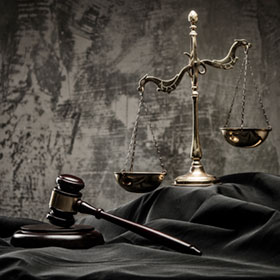Background
The Supreme Court Decision
In its decision of June 2, 2014, in Limelight Networks Inc. v. Akamai Technologies Inc., the United States Supreme Court unanimously reversed an en banc decision of the Court of Appeals for the Federal Circuit which had held that different tests should be applied to liability for patent infringement of a method claim requiring actions by more than one party, depending on whether the defendant was accused of direct infringement or of inducing infringement. In the former case all steps had to be carried out by or under the control of a single party, in the latter the defendant could be liable if the steps of the claim were carried out by multiple parties following inducement by the defendant. The Supreme Court disagreed, holding that the same test was applicable for both direct infringement and inducement of infringement.
Background
The question of what constitutes patent infringement where a patent claim requires actions by more than one actor has become a hot topic in recent years.
In 2008, in Muniauction Inc. v. Thomson Corp., the Court of Appeals for the Federal Circuit held that in such situations there was direct infringement under 35 USC 271(a) only when a single defendant carries out all of the steps of a method claim or where a single party “exercises control or direction over the entire process such that every step is attributable to the controlling party”.
However, in 2012 in Akamai Technologies Inc. v. Limelight Networks Inc. in considering the question of induced infringement under 35 USC 271(b), the Federal Circuit en banc decided that a different test applied and that there could be inducement of infringement even if no one actor carried out all of the steps required for direct infringement. The court noted that:
Recent precedents of this court have interpreted section 271(b) to mean that unless the accused infringer directs or controls the actions of the party or parties that are performing the claimed steps, the patentee has no remedy, even though the patentee’s rights are plainly being violated by the actors’ joint conduct. We now conclude that this interpretation of section 271(b) is wrong as a matter of statutory construction, precedent, and sound patent policy.
After noting that, unlike direct infringement, induced infringement is not a strict liability tort but is one that requires intent, the court went on to say:
If a party has knowingly induced others to commit the acts necessary to infringe the plaintiff’s patent and those others commit those acts, there is no reason to immunize the inducer from liability for indirect infringement simply because the parties have structured their conduct so that no single defendant has committed all the acts necessary to give rise to liability for direct infringement.
The Supreme Court’s Decision
The defendant Limelight petitioned for certiorari which the Supreme Court granted. As noted above, the Supreme Court in an opinion by Alito, J. then reversed the decision of the Court of Appeals.
In doing this, the Supreme Court expressly declined to consider the question of whether Muniauction was correctly decided and in remanding the case to the Federal Circuit Court of Appeals, the Supreme Court noted “on remand, the Federal Circuit will have the opportunity to revisit the 271(a) question if it so chooses”. What the Supreme Court did decide was that “where there has been no direct infringement, there can be no inducement of infringement.” Having different requirements of direct and induced infringement “would require the courts to develop two parallel bodies of infringement law: one for liability for direct infringement, and one for liability for inducement.
The Supreme Court noticed that Congress had in 35 USC 271(f)(1) adopted different standards to provide for liability for induced infringement where there was no direct infringement in the limited circumstances of supply of components of a patented invention to persons outside the United States in such a manner as to induce their combination such that, if carried out in the United States, would constitute direct infringement, but which if carried out outside the United States was not a direct infringement. The courts should not create liability for inducement of non-infringing conduct where Congress has elected not to extend that concept.
Hence, there was no inducement of infringement in the present case where Limelight carried out several steps of the claimed process relating to delivery of a website’s content to individual Internet users, but its customers carried out other required steps.
The Supreme Court recognized that its interpretation of 35 USC 271(b) permitted
a would-be infringer to evade liability by dividing performance of a method patent’s steps with another whom the defendant neither directs or controls. … Any such anomaly, however, would result from the Federal Circuit’s interpretation of §271(a) in Muniauction. A desire to avoid Muniauction’s natural consequences does not justify fundamentally altering the rules of inducement liability that the text and structure of the Patent Act clearly require – an alteration that would result in its own serious and problematic consequences, namely creating for §271(b) purposes some free-floating concept of “infringement” both untethered to the statutory text and difficult for the lower courts to apply consistently.
The case now goes back to the Federal Circuit to consider whether the issues arising from the test adopted in Muniauction and the problems it may cause for claim drafters for inventions involving multiple steps are such that the Muniauction decision should be reconsidered.
